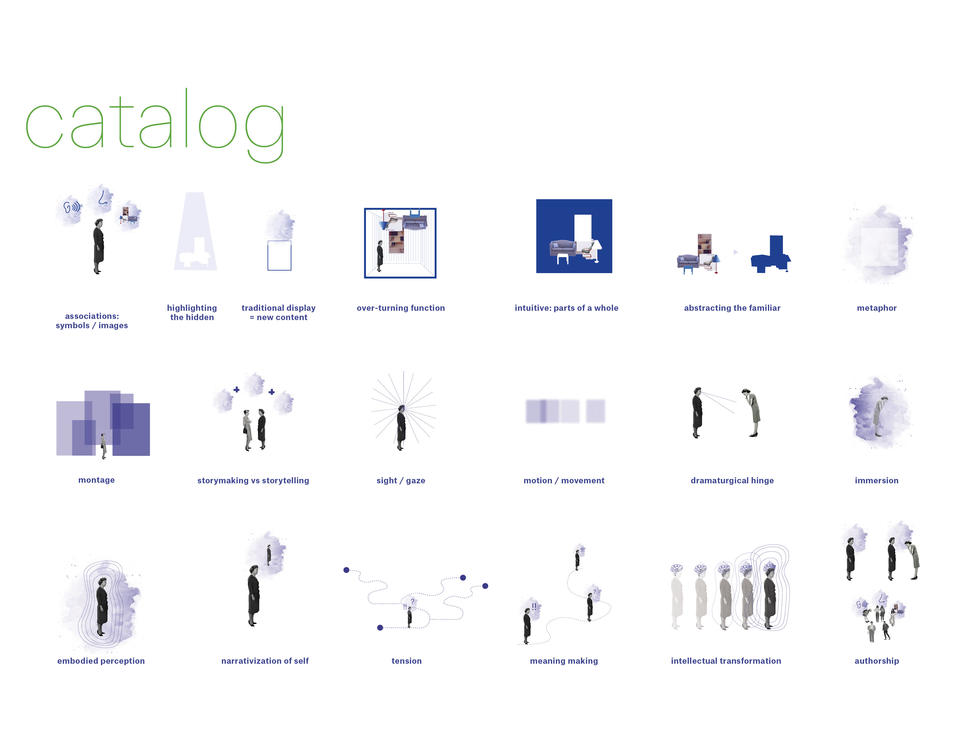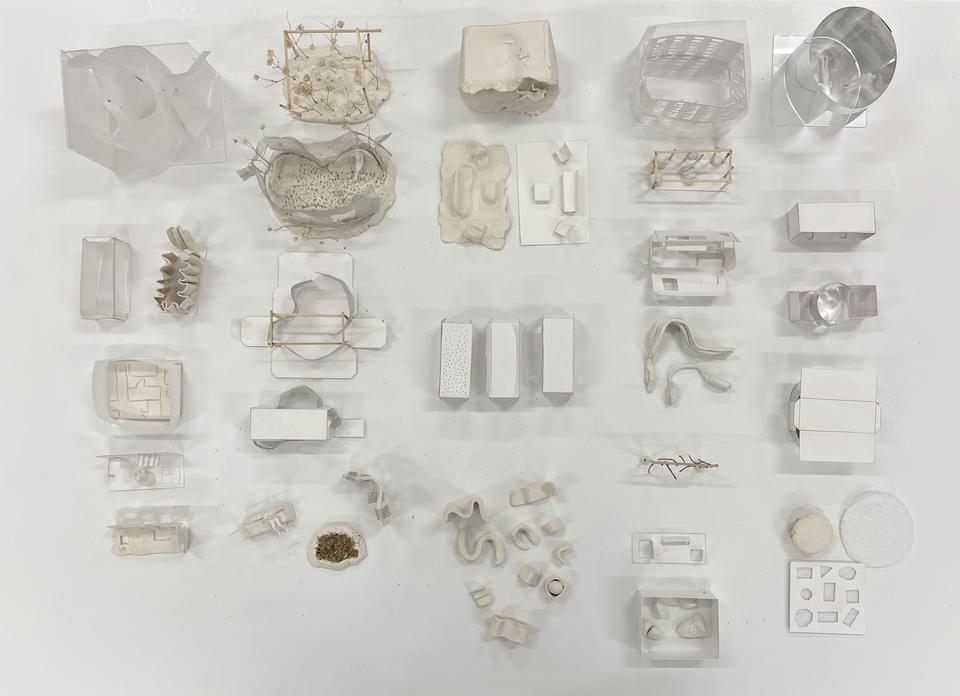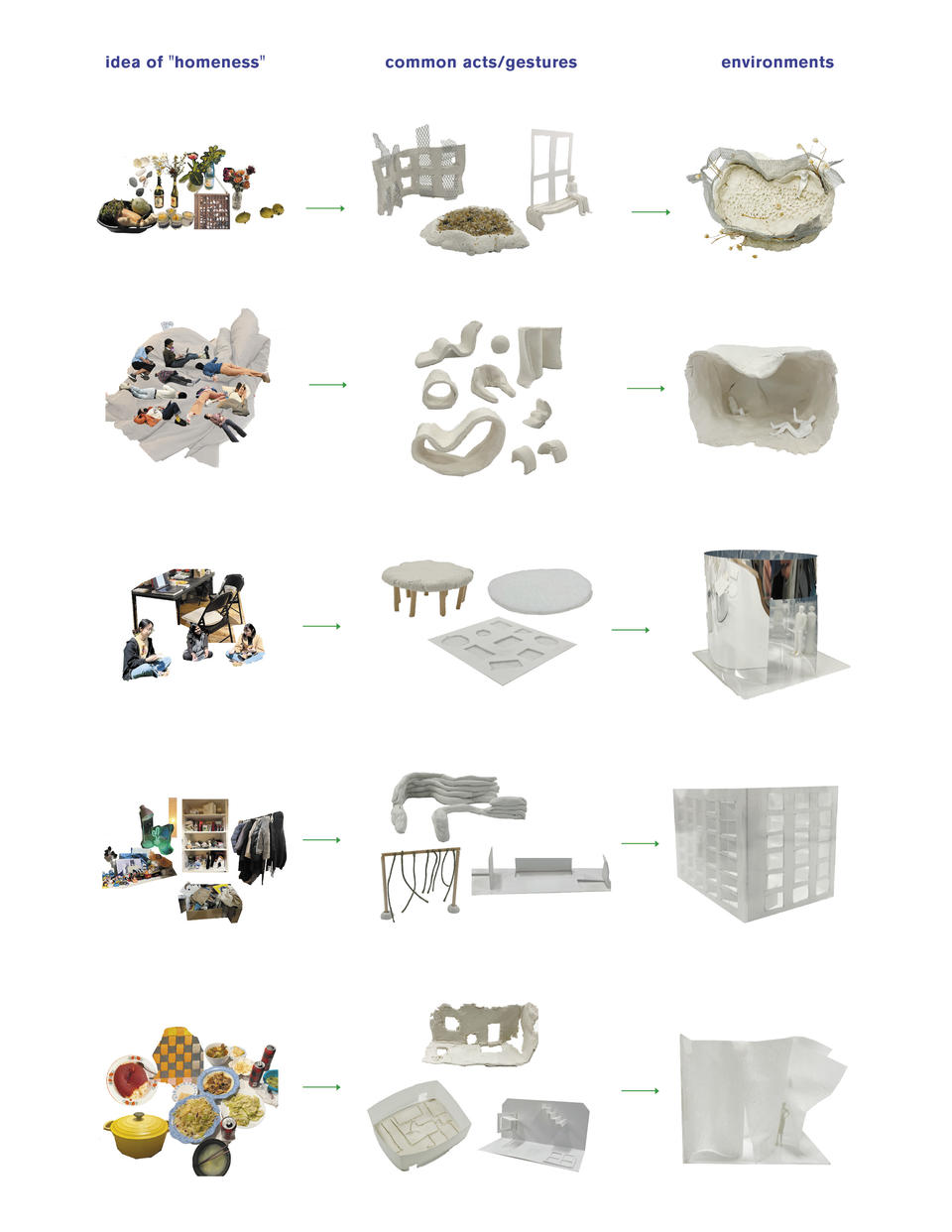Sanah Devika Rao
Exhibiting the Formless: Rethinking Display Through the Dematerialized Home
Traditionally exhibition design has been an object-centric discipline, from the private collection of objects to their museological representation. The single curatorial perspective embedded in the design of these spaces lacks acknowledged authorship and opportunity for subjective interpretation. Objects are material interpretations of immaterial ideas, however, displays seem to enhance their objective form more than the ideas they carry. Exhibitions on Home reflect this pattern of display at two extremes: one serving as an objective tool for popularization of modern domestic styles (Colomina,1994) and two, as future utopian form simulated with aesthetic design objects (Ambasz, 1972). The act of display is linked to consumption of material goods, more than the act of personal reflection.
This thesis demonstrates the ability of exhibition design to evoke and express ideas without the presence of the curated object. Shifting focus from the traditional physical display (material) to environments representing essence (immaterial) can better narrate the expression of an idea and its interpretations to an exhibition audience. To investigate this hypothesis, the thesis aims to explore the non-physical form of home (Plato, 2009) through the creation of a series of narrative environments to better exhibit the essence of homeness.
Living in a globalized world, the idea of home has transformed from traditional notions of domesticity and home ownership within an exclusively spatial interior concept, to a nomadic transcontinental sense of being that we carry with us. We materialize the non-physical home in objects of belonging we carry with us and spaces we perceive as familiar. Using the home as a catalyst, the thesis researches strategies for the absence of the object in activating the ‘display’ to reflect an idea and allow for its subjective interpretation. To test these design strategies, the siteless identity of ‘home’ will translate into a series of spatial environments. These environments will explore ideas of memory, time, community, belonging and comfort as universal gestures inspired and activated by individual experience. Every interaction will lead to a new interpretation. This can be applied as a technique to display any state of being, where the elimination of the object exhibits the formless.
Image
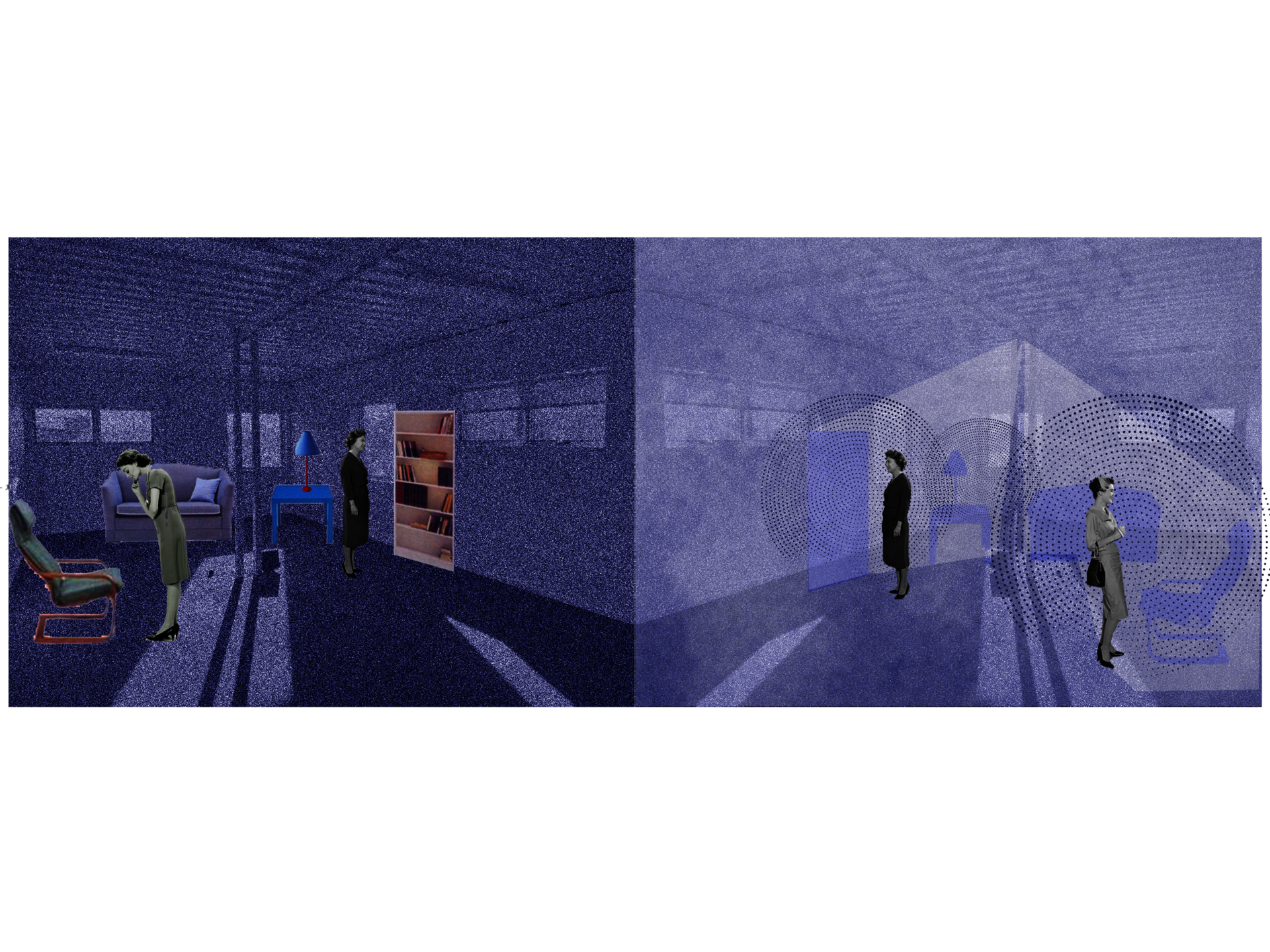
Exhibiting the Formless
2022
The thesis speculates the ability of exhibition design to evoke and express ideas without the object. Interpreting this approach in the context of home - creating spatial interpretations to recognise and familiarise with the elements of “homeness”, one leaves with the understanding of the ‘idea’ of home as a non-physical and siteless idea. It puts to test the power of an exhibition environment to influence and question our personal interpretations of home through shared experiences of it.
Image
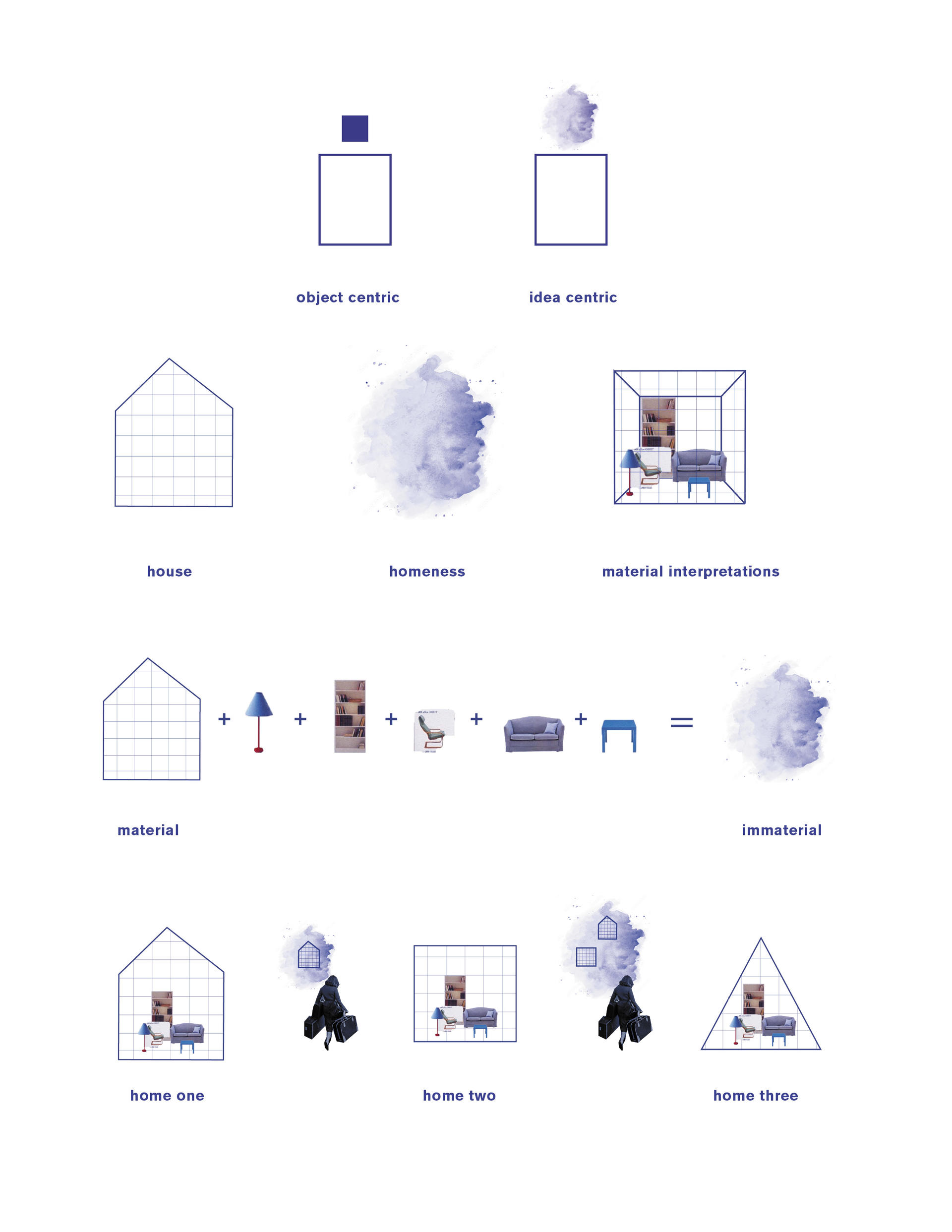
The Objectless Environment
On thinking about where I position myself in this discipline, I want to research its extent beyond the traditional scope of museological representation. The process of designing an exhibition is almost always linked to a list of objects defined by a single curatorial voice, around which a spatial narrative is woven. The design aims to communicate the story, and highlight the form of the object through varying modes of display. If we consider the vitrine, the archetype of display: the simple gesture of putting an object on a raised platform gives it importance, however the object itself somehow loses its essence and becomes a thing of beauty. When I say essence, I don’t mean the physical form, but the story, personal meaning and context that has given it its form. Therefore, the line of inquiry does not reject museum practice in its entirety, but challenges the thought behind museum display and institutional code that give it their form. How might we take on new methods in exhibition practice by asking ourselves, what is the act of exhibiting and its relationship to the object? What is the object without the display, and what is the display without the object? And if we were to eliminate the object from the exhibiting process, could we evoke its presence through different forms of evocative display? Branching from this positioning, I started thinking about everyday objects that were infused with meaningful ideas, expressed through both physical form but also feeling. The trinkets I brought with me from my home in India to create my own space in America, were my starting point. The dissonance between a physical space and the feeling of home triggered by a shift in context led to different interpretations of the same objects I carried. The act of migration recalled gestures of creating home,a feeling of familiarity and personal reflection. Therefore, the idea of home presents itself as a perfect example of the dichotomy between form (material) and formless (immaterial); object and essence. Bridging the evocative experience of objectless display with the formless interpretation of an idea, home is one of the many ideas that lends itself to this exploration. The replicability of this approach to exhibition can extend to other states of being like love, ethnicity, identity, work, play and more. I am interested in the inversion of the traditional display limited by the object and I wish to explore this through conceptual spatial interpretations and experiences, a process museological approaches fail to display, evoke and exhibit.
Image
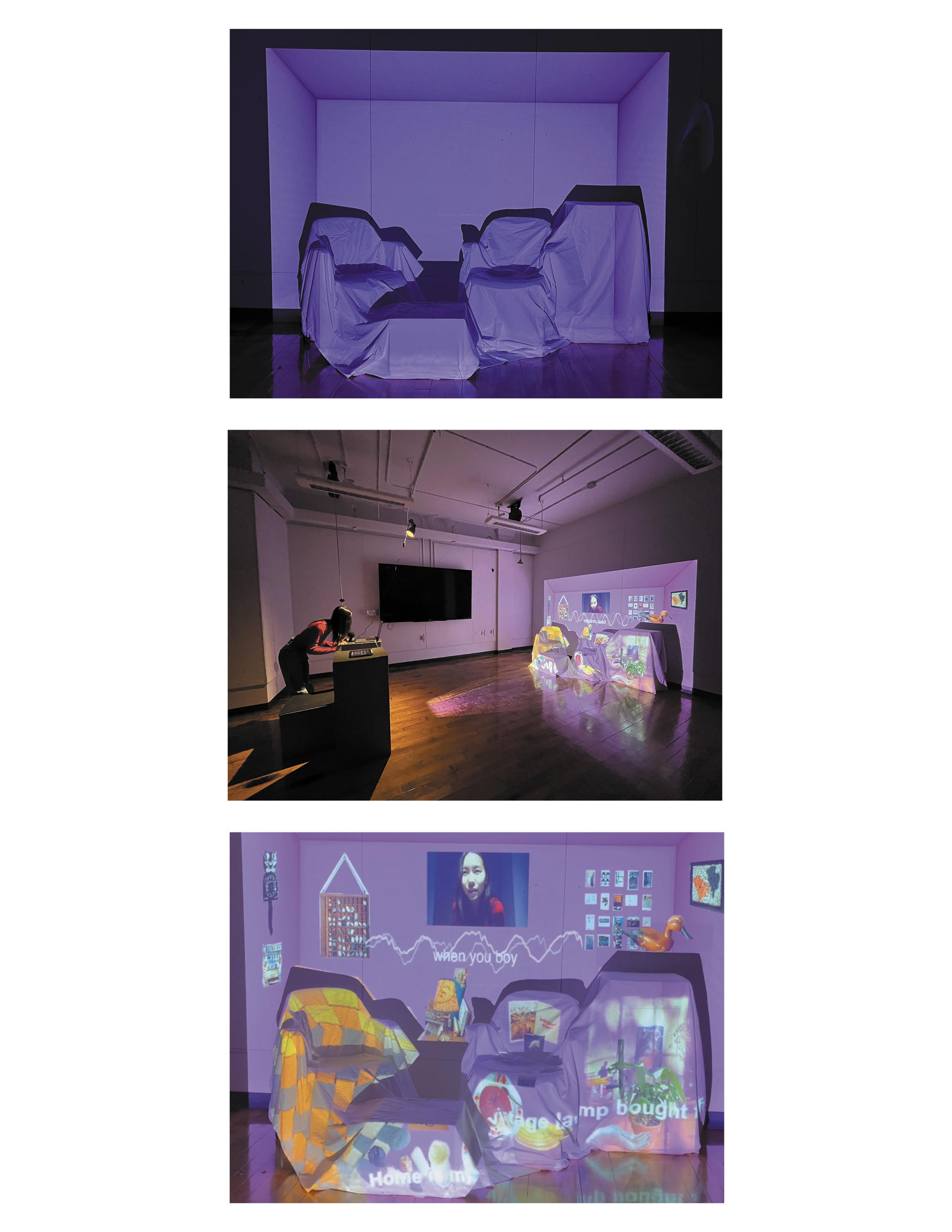
Objects of Home: Interactive Installation
2021
The installation is an experiment to explore the ‘idea of home’ within the framework of my thesis. It aims to create a digital archive of domestic objects of belonging as different physical interpretations of home. Visitors are prompted with the question, what objects remind you of home? and are required to send these images to a database. On arrival, they will experience an abstracted domestic environment in a room with no projections.The fifirst encounter will be with a touch based interface which will prompt visitors to upload the file they submitted to the database before. The object/s will slowly be projection mapped onto the surface of the abstracted domestic environment. This upload will also prompt visitors to further record their memory associated with the object of belonging into a mic. The mic and video of the visitors will appear on the environment, with a reactive audio wave. The object looses its physicality by becoming a digital entity. Its existence is defined by it's essence. The memory becomes an ephemeral moment contained within the space and time of the installation experience
Image
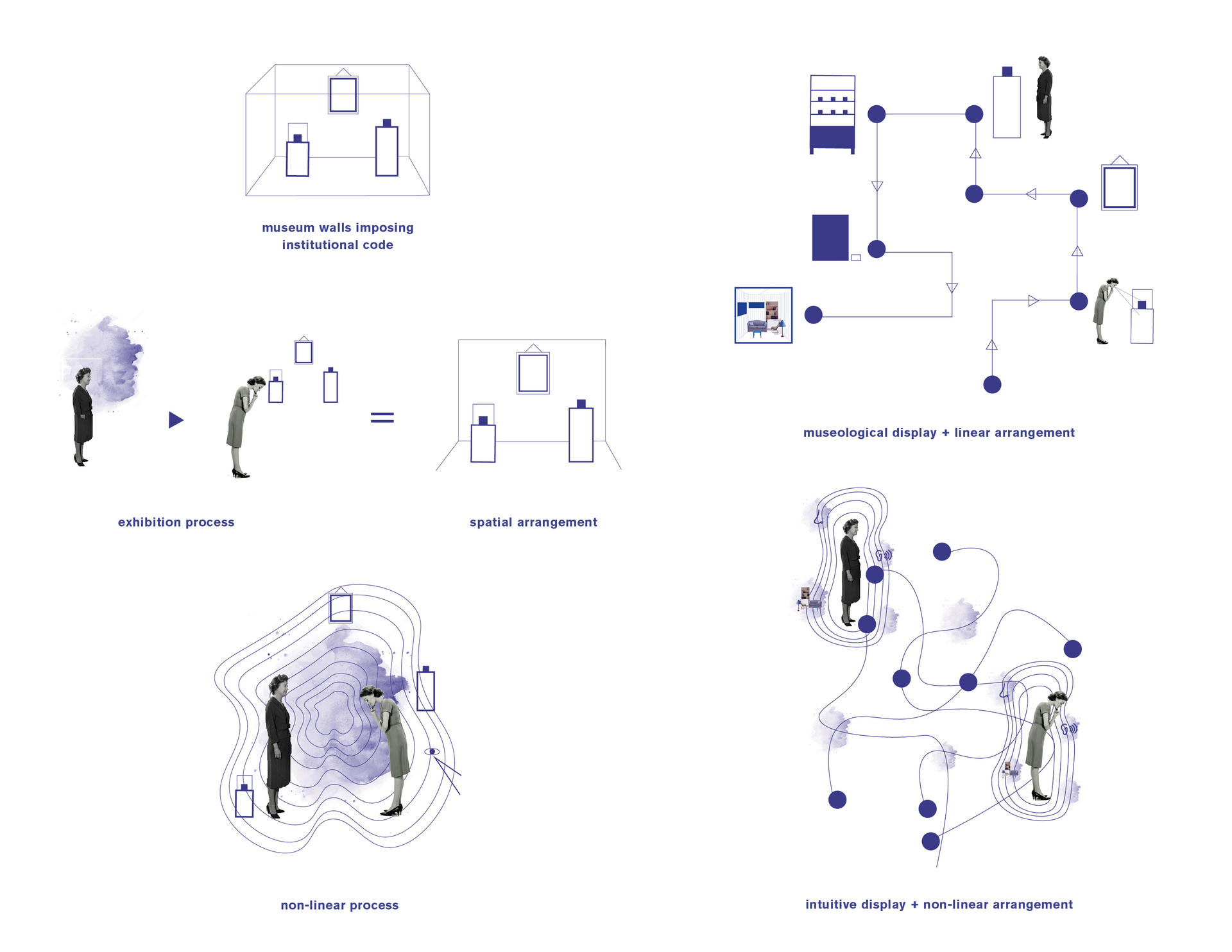
Object to Environment
Diagrams critiquing museum exhibition display
The thesis’s line of inquiry researches the spaces and processes of exhibition making as a starting point to test the hypothesis of an objectless environment. It tries to understand specific instances of institutional practice, display, processes and experience that are object centric, to understand how narrative environments can create the potential to explore objectless experiences.
Image
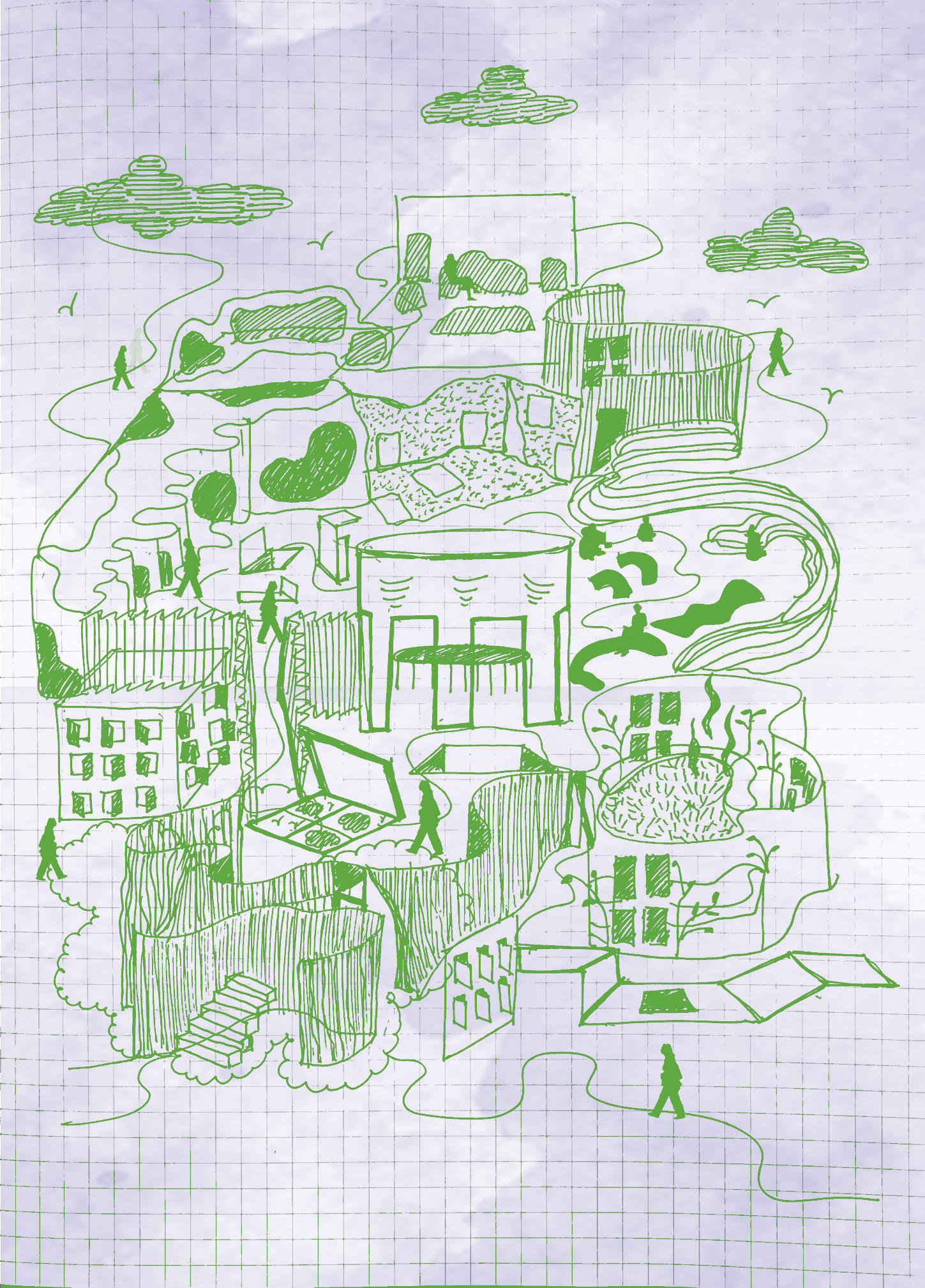
Siteless Space: The Narrative Environment
The idea or form is aspatial and atemporal (Plato, 2009), and the narrative environment that houses this idea exists in the space and time of its own creation. It becomes an “empty space”39 outside the museum walls, as Peter Brook defines it, capable of “stripping the place in terms of old redundant cultural code” 40 and re-creating “new potential and significant signs”41 The amorphous nature of home is essentially siteless - a non-physical idea that can be carried and recreated in a new space. To reiterate, home is a concept we carry with us, a house is an embodiment of that idea. Home is immaterial (formless), whereas a house is the material (form) expression of a homes’ concept. The design will explore how the characteristics of siteless can be translated through an amorphous experience. The siteless nature is in the experience of the narrative environment. A familiar, yet uncanny space that is an exploratory dreamscape. One enters not knowing where they are, nomadically circulating and interacting with staged environments that prompt physical memories and emotions.The siteless environment aims to prompt multiple interpretations with every individual encounter. The infiniteness doesn’t translate in the physical space but the infinite interpretations and interactions that can take place within an environment. The way one nomadically decides to experience the environment themselves in a non-linear way can lead to multiple subjective storylines and pathways. The thesis aims to speculate a space beyond the museum walls that overturns the conventions that the walls impose. Museums as described by Foucault are heterotopias of time linked to the "accumulation of everything"43 in one space, however they also exist outside of time serving as a “a sort of general archive, the will to enclose in one place all times, all epochs, all forms, all tastes, the idea of constituting a place of all times that itself outside of time and inaccessible to its ravages, the project of organizing in this a sort of perpetual and indefinite accumulation of time in an immobile place, this whole idea belongs to our modernity” 44 Therefore, the siteless space that is to be imagined doesn’t exist, it is a space that lives within the framework of this thesis; a means to express and evoke ideas that are atemporal and aspatial (Plato 2009) that the thesis questions.
- Architecture
- Ceramics
- Design Engineering
- Digital + Media
- Furniture Design
- Global Arts and Cultures
- Glass
- Graphic Design
- Industrial Design
- Interior Architecture
- Jewelry + Metalsmithing
- Landscape Architecture
- Nature-Culture-Sustainability Studies
- Painting
- Photography
- Printmaking
- Sculpture
- TLAD
- Textiles
